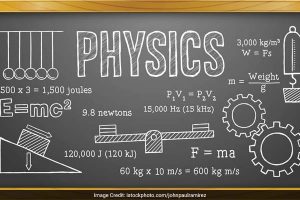Einstein’s photoelectric equation
Einstein gave an explanation for photoelectric emission based on the Planck’s quantum theory of light.


When light of certain frequency (greater than threshold frequency) incidents on a metallic surface the energy on incident photon (hf) is:
Partly used to eject the electron from surface.
Partly remains as kinetic energy of ejected electrons.
i.e. Energy of photon = Work Function + Kinetic Energy of Electrons
or,
hf=ϕ+Kinetic Energyhf=ϕ+Kinetic Energy
hf=hf∘+Kinetic Energyhf=hf∘+Kinetic Energy
chλ=chλ∘=12mv2chλ=chλ∘=12mv2
Where, h = Planck’s constant = 6.63×10-34 Js
Laws of photoelectric emission:
There exists a minimum frequency of incident light below which photoelectric emission is no possible. The frequency is called threshold frequency.
A part of energy of incident electrons is used to eject electrons from a surface and remaining as kinetic energy of the ejected electrons.
Increase in intensity of light increases the number of photoelectron.
Increase in frequency of light increases the kinetic energy of electrons.




